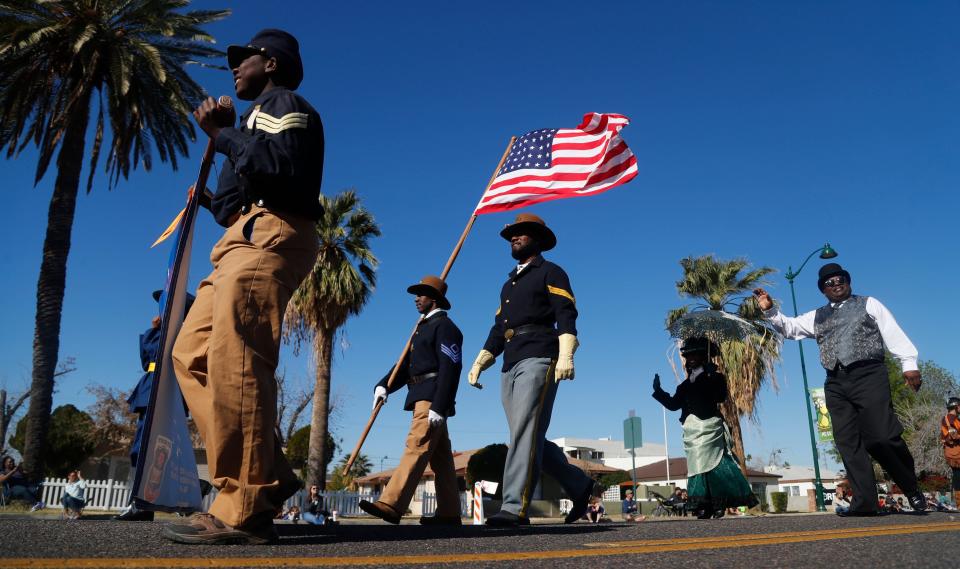National parks preserve legacy of African American history, civil rights

One of our primary responsibilities at the Department of the Interior is to steward our nation’s historical treasures and preserve landmarks central to our national identity and culture. During this national African American History Month, we have a special opportunity to reflect on the lasting legacies of African American leaders throughout our history and celebrate African Americans’ far-reaching contributions to our nation.
At the Department of the Interior, part of our effort to improve visitors’ experiences at our national parks and public lands is through finding new ways to strengthen our role in educating the American people about our shared past. We are tasked with protecting national treasures that honor and memorialize extraordinary African American history. From abolitionist leader Fredrick Douglass’ home here in Washington to the Booker T. Washington National Monument near Roanoke, Virginia, to the Brown v. Board of Education National Historic Site in Topeka, Kansas, Interior fulfills its mission to bring African American heritage into focus for current and future generations of Americans.
Through the National Park Service, the department also preserves sites that commemorate, honor and interpret the significant time period from 1939 to 1968 as part of the African American Civil Rights Network, which was created by President Donald Trump in January 2018.
To freedom: Modern griots retell black history through oral stories of escapes from slavery
Internal conflict: Don't pit slavery descendants against black immigrants. Racism doesn't know the difference.
Retelling black history: 3 women on navigating personal encounters with racism
Black History Month essay: I searched a continent a world away, hoping to find 'home'
In February 2018, the Mitchell Jamieson mural, depicting Marian Anderson’s 1939 performance on the steps of the Lincoln Memorial, was the inaugural site in the network. It was followed by several others, including the Peace Memorial in Martin Luther King Jr. Park in Indiana and the Shelley House in Missouri, central to a case that held that restrictive covenants in housing violated the Equal Protection clause of the U.S. Constitution's 14th Amendment. In October 2019, the National Park Service announced 22 new sites and programs as part of the growing network.

To date, 28 sites are designated in this network, including New Orleans NAACP attorney A.P. Tureaud's home in Louisiana and the Medgar and Myrlie Evers home in Jackson, Mississippi, where Evers, the state's field secretary for the NAACP, was assassinated – a turning point leading to the passage of the Civil Rights Act of 1964. Also included is the Lorraine Motel, now the National Civil Rights Museum, where Martin Luther King Jr. was assassinated on April 4, 1968, in Memphis, Tennessee.
A visit to a national park or monument central to African American history reminds us, therefore, of the rich history and the long, noble struggle for civil rights that took place across this country – and the work that lies ahead in building a more just and perfect union. Our park rangers and interpreters bring these histories to life for all who visit. Nothing helps one more fully understand the prejudice and tribulations encountered by civil rights leaders than walking in their very footsteps and grappling with the challenges they faced.
As our department celebrates African American history this month, we also take the time to reflect on the intersection of African American history with the history of our department and the lands and landmarks that we steward. For me, one particular anecdote stands out: At the turn of the 20th century, two cavalry regiments of “Buffalo Soldiers” – the name for all-black regiments initially formed in the aftermath of the Civil War – were dispatched westward and assigned to oversee Yosemite, Kings Canyon and Sequoia National Parks.

These Buffalo Soldiers cavalry and infantry units became America’s first park rangers, enforcing laws, planning and constructing infrastructure projects and working to preserve natural beauty. Charles Young, the third African American to graduate from the U.S. Military Academy at West Point, was among the Buffalo Soldiers in the West.
Young worked his way up the ranks to serve as the nation’s first African American national park superintendent at Sequoia National Park. He and his servicemen were integral in helping preserve this natural wonder for future generations of Americans. And their legacy, in many regards, helps define the National Park Service to this day – even aesthetically. (The iconic, creased hat donned by park rangers owes its heritage to the Buffalo Soldiers.) The next time you visit Yosemite, Sequoia or Kings Canyon National Park, take a minute to remember the Buffalo Soldiers and their early and significant contributions to our national parks system.
At the Department of the Interior, my colleagues and I are proud to play a role in celebrating African Americans’ great contributions to our national identity. We remain committed to educating current and future generations of Americans – and all who visit our national parks, landmarks and memorials – on the stories of those who advanced the cause of civil rights and implored America to honor her founding creed.
David L. Bernhardt is the 53rd U.S. secretary of the interior.
This article originally appeared on USA TODAY: National parks preserve legacy of black history and civil rights

